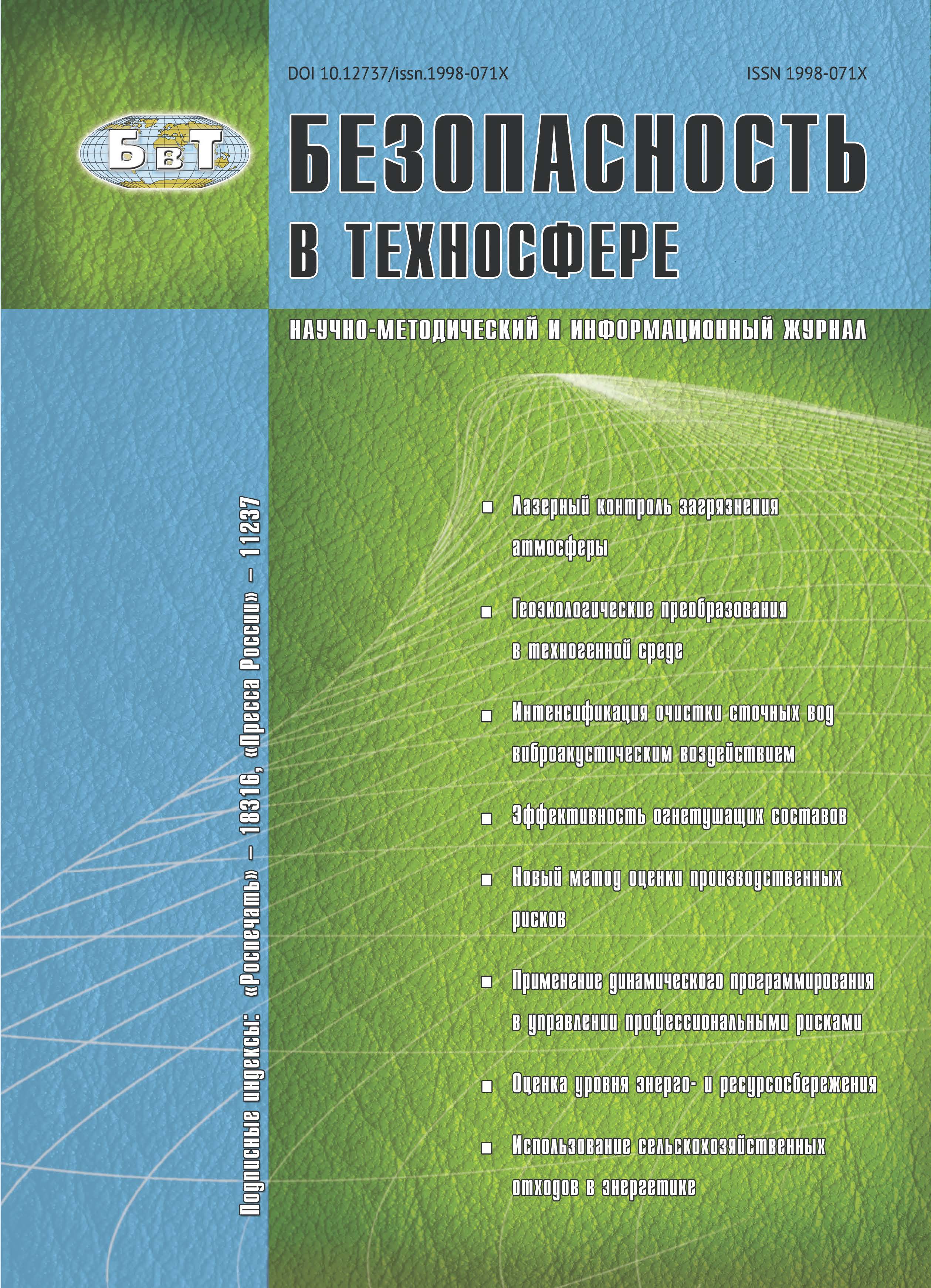The paper researches and optimizes new physical methods of industrial wastewater treatment of organic contaminants for advanced environmental technologies. It presents the results of studies of photodegradation of the organic methylene blue by high-intensity optical continuous spectrum radiation generated by xenon pulsed lamp in aqueous solution. Processing of aqueous solution was carried out in once-through and circulation modes without using any additional chemicals. The possibility of deep degradation of an organic pigment as the result of direct photolysis is displayed. Specific energy consumption was determined for photochemical water purification in once-through and circulation modes. Energy consumption required to achieve a given level of reduction of the initial concentration of the water pollutant in circulation mode can exceed that in once-through mode of photochemical processing by several times. Experimental results are consistent with theoretical estimations.
water treatment, organic pigment, photodegradation, xenon pulsed lamp, once-through mode, circulation mode, specific energy consumption.
1. Введение
Сточные воды предприятий химической, текстильной, фармакологической и т.п. промышленностей, как правило, содержат высокие концентрации органических соединений, очистка от которых до уровня современных нормативных требований с помощью традиционных методов водоподготовки (фильтрация, реагентная обработка, сорбция и др.) часто оказывается или неэффективной, или нецелесообразной по экономическим или эколого-гигиеническим показателям. В связи с этим в последние годы интенсивно исследуются и внедряются различные физические методы обработки воды, позволяющие осуществлять деструкцию органических загрязнителей при существенном сокращении использования дополнительных химических реагентов или вообще без их применения. Среди таких методов в качестве перспективных рассматриваются плазмохимические методы обработки воды с применением различных типов электрических разрядов (тлеющих, барьерных, дуговых и др.) [1–3] и плазменно-оптические (или фотохимические) методы, основанные на использовании плазменных источников ультрафиолетового излучения [4–6].
1. Kutepov A.M., Zaharov A.G., Maksimov A.I. Problemi i perspectivi issledovaniy aktiviruemih plasmoi technologicheskih processov v rastvorah [Problems and prospects of research technological processes in solutions activated by plasma]. Dokl. RAN [Reports of Russian Academy of Science]. 1997, V. 357, I. 6, pp. 782-786. (in Russian)
2. Bruggeman P., Leys C. Non-thermal plasmas in and in contact with liquids. J. Phys. D: Appl. Phys., 2009. Vol. 42, № 5. pp. 28-30.
3. Korostovenko V.V., Gron V.A., Shahray S.G., et al. Primenenie electroimpulsnogo metoda ochistki stochnih vod ugolnih mestorogdeniy [Application of electric pulse wastewater treatment at coal mines]. Sovremennie naukoemkie technologii [Modern High Technologies], 2013, I. 10, pp. 164-169. (in Russian)
4. Legrini O., Oliveros E., Braun A.M. Photochemical Processes for Water Treatment. Chemical Reviews, V. 93, №2, 1993, pp. 671.
5. Kamrukov A.S., Kozlov N.P., Seliverstov A.F., Yalovik M.S. Fotohimicheskaya ochistka vodi shirokopolosnim impulsnim UF izlucheniem [Photochemical water treatment by broadband pulsed UV radiation]. Bezopasnost v tehnosfere [Safety in Technosphere]. 2006, I. 1, pp. 38-44; I. 2, pp. 21-26; I. 3, pp. 17-23. (in Russian)
6. Karmazinov F.V. Ultrafioletovie tehnologii v sovremennom mire: Kollektivnaya monographiya [Ultraviolet technologies in the modern world: Collective monograph] Dolgoprudniy, Izdatelskiy Dom “Intellect” Publ., 2012. 392 p. (in Russian)
7. Method of sterilization. Hiromoto A. - USA Patent 4464336, 1984.
8. Wekhof A. Treatment of Contaminated Water, Air and Soil with UV Flashlamps. Environmental Progress, 1991, Vol.10, № 4, pp. 241-247.
9. Arkhipov V.P., Kamrukov A.S., Shashkovskiy S.G. Sposob dezinfekcii i sterilizacii otkritih poverhnostey ob’ectov, gidkosti i vozduha [Way of disinfection and sterilization of object’s surfaces, water and air]. Patent RF 2001629 [Russian Federation Patent 2001629], 1993. (in Russian)
10. Marshak I.S. Impulsnie istochniki sveta [Impulse light sources]. Moscow, Energy Publ., 1978. 472 p. (in Russian)
11. Jockusch S., Lee D., Turro N.J., Leonard E.F. Photo-induced inactivation of viruses: Adsorption of methylene blue, thionine, and thiopyronine on Qb bacteriophage. Proc. Natl. Acad. Sci. USA, 1996, V. 93, pp. 7446-7451.
12. Razdobreev D.A., Lantuh Yu.D., Stryapov A.V. Spectri pogloshcheniya i konstanti dissociacii dimernih form tiozinovih krasiteley [The absorption spectrum and dissociation constants of dimeric forms thiazine dyes]. Vestnik OGU [Bulletin of Orenburg State university], 2004, I. 2, pp. 144-146. (in Russian)
13. Terenin A.N. Fotononika molekul krasitilei i rodstvennih organicheskih soedineniy [Photonics of dye molecules and related organic combinations]. Lipetsk, Science Publ., 1967, 616 p. (in Russian)
14. Calvert, J.G. and Pitts, J.N., Jr. Photochemistry (New York: John Wiley & Sons, 1966), 899 p.






